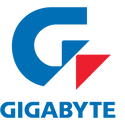Bethesda Releases First Hotfix for Starfield, Promises DLSS Support and More
First, an enormous thank you to all of you playing Starfield and your support. We are absolutely blown away by the response and all you love about the game. We're also reading all your great feedback on what you'd like to see improved or added to the game. This is a game we'll be supporting for years and years to come, so please keep all the feedback coming! Even if we don't get to your requests immediately, we'd love to do it in the future, like city maps. Our priority initially is making sure any top blocker bugs or stability issues are addressed, and adding quality-of-life features that many are asking for.
This first update is a small hotfix targeted at the few top issues were are seeing. After that, expect a regular interval of updates that have top community requested features including:
This first update is a small hotfix targeted at the few top issues were are seeing. After that, expect a regular interval of updates that have top community requested features including:
- Brightness and Contrast controls
- HDR Calibration Menu
- FOV Slider
- Nvidia DLSS Support (PC)
- 32:9 Ultrawide Monitor Support (PC)
- Eat button for food!



























































